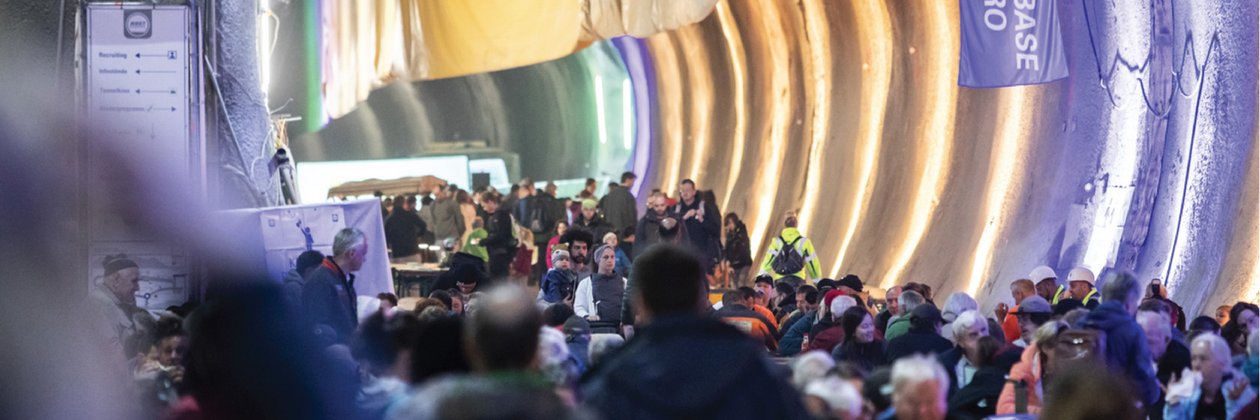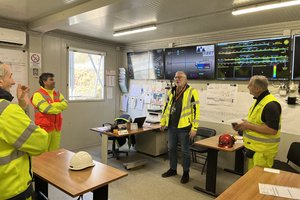Mr. Voza, what measures does BBT SE put in place to protect the safety of workers within this construction lot?
First and foremost, the safety of workers is the responsibility of the workers themselves: they must be responsible for their own safety and be prepared to avoid any potentially dangerous situation. They must therefore be fully informed and adequately equipped.
In addition, it is very important to provide the construction site with a system to constantly monitor all the activities that are carried out.
For this reason, possible emergency scenarios were developed and, in cooperation with the contractor and the local safety authorities, the site was equipped with several tools to monitor the works within the tunnel. Emergency management, naturally, concerns more critical events than those dealt with in the ordinary way by the Safety and Coordination Plan that every construction site must have by law.
Can you explain in more detail what the screens in the emergency coordination room at the Mules construction site are used for?
The office of the emergency coordinator of the Mules 2-3 construction site, also known as the "COE operations room" , is devoted exclusively to ensuring the safety of the construction site. The screens here make it possible to monitor all the activities that are essential for safety management: the detection, by means of a fibre laser system, of possible fire outbreaks, the management of the ventilation system, the management of water resources for fire-fighting systems and rail traffic control.
With these systems, and the constant knowledge of how many people are on-site and where, one can discover possible dangerous situations in a timely manner, organise rescue teams and coordinate with external territorial bodies for more structured emergency management.
Are there any other special features of this building lot that have to do with worker safety?
There is a specialised team that is able to intervene immediately, should the fibre laser system detect the start of a fire; the team is able to act promptly, and then coordinate with external rescue facilities. This team can operate in the tunnel thanks to a special rail vehicle, which is able to move within the tunnel even with poor visibility and low oxygen. It is a pressurised vehicle that was created especially for this type of event.
Finally, it is worth emphasising that on all three TBMs that are excavating or have excavated tunnels in this construction lot - Serena, Virginia and Flavia - there is a medical station that is able to provide first aid and stabilise an injured person while still on board the TBM, 24 hours a day, throughout the entire period in which the machines are working.
We would like to thank Mr. Antonio Voza for summing up for us the stringent safety measures adopted by Galleria di Base del Brennero BBT SE to protect the workers on its construction sites. Starting with the operations room in Mules, and thanks to the excellent cooperation between the project company, the contracting company and the local authorities, the site is able to guarantee a safe working environment and to prevent and manage possible emergency situations.


